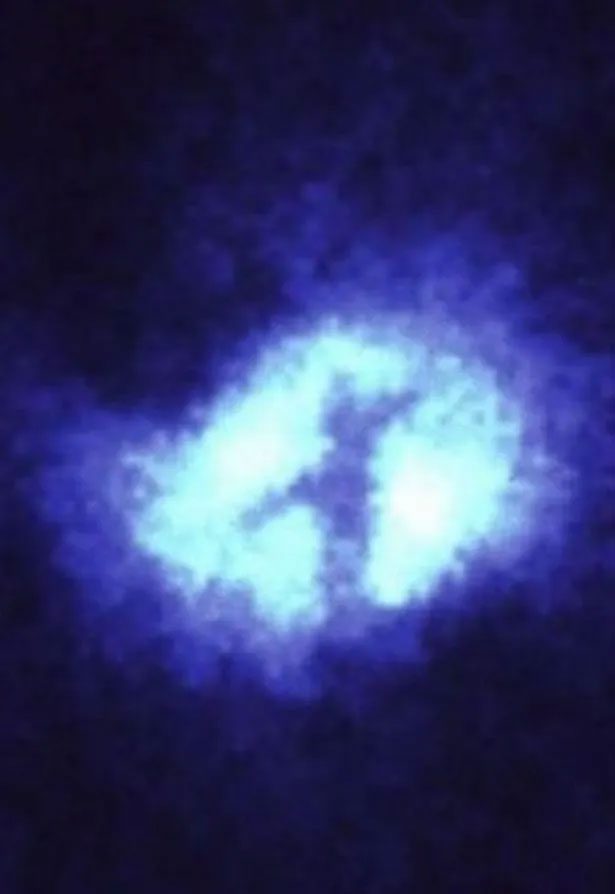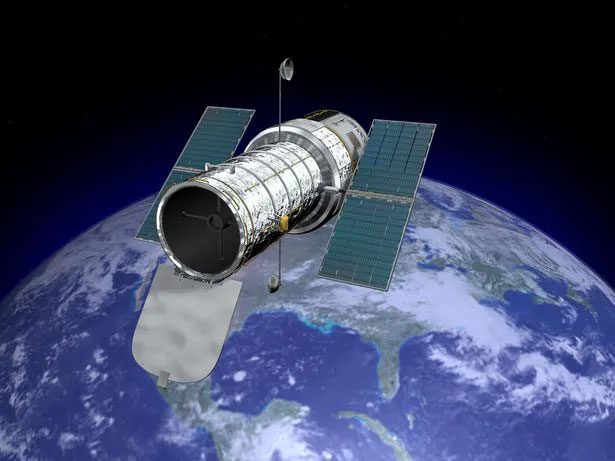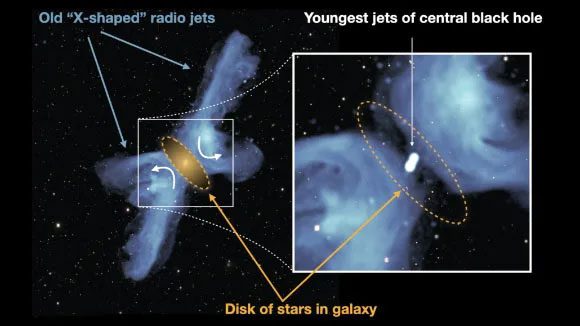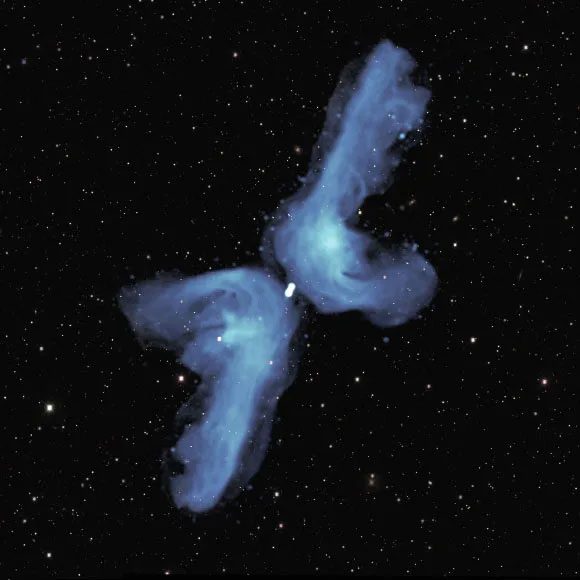Using telescopes and advanced technology, NASA scientists have been continuously observing the vastness of space and illuminating the mysteries of the universe.
Among countless celestial wonders, the discovery of a cross-shaped structure in the middle of a galaxy stands out as an intriguing finding.
This cross-shaped structure, composed of cosmic dust and gas, extends an astonishing distance—thousands of light-years.
The unique shape of the structure resembles the Christian cross, evoking curiosity and amazement among scientists and the public alike.
NASA’s discovery has opened a new field of exploration, as astronomers embark on the mission to decode the origins, components, and fundamental forces that have shaped this remarkable structure.
The interdisciplinary nature of the investigation brings together experts from various fields, including astrophysics, cosmology, and religious studies, fostering collaborative efforts to unravel the mysteries of this celestial phenomenon.

This image, captured by NASA’s Hubble Space Telescope, shows a cross-shaped structure in deep space resembling a cross. According to hubblesite.org, which published the first image, the cross is caused by “dust absorption and marks the exact position of a formed black hole.”
Theories and Speculations
The identification of a cross-shaped structure in the middle of a galaxy has sparked a range of hypotheses and speculations about its origins and possible significance. Some scientists propose that the formation may be a result of natural astrophysical processes, such as magnetic field interactions and cosmic turbulence. Others suggest that this unique structure is indicative of cosmic symmetry.
Beyond scientific explanations, the cross-shaped structure has also stirred public discussions. Some view it as a sign or cosmic symbol, prompting reflections on the intersection of science and spirituality. This convergence between scientific discovery and metaphysical contemplation adds an intriguing aspect to the ongoing exploration of the structure’s significance.
As theories continue to emerge, it is vital to approach this discovery with scientific rigor and an open mind. NASA and its collaborators are conducting extensive observations, simulations, and data analyses to distinguish the underlying mechanisms responsible for the formation of this captivating cosmic intersection. The meticulous investigation aims to shed light on the physical processes and cosmic phenomena that have created this mysterious structure.

The cross structure was discovered by NASA’s Hubble Telescope.
Decoding the Mystery
Astronomers using the MeerKAT telescope at the South African Radio Astronomy Observatory in Cape Town have discovered that the true shape of this structure is “X-shaped.” The astronomers explain that there are, in fact, multiple active galaxies with massive radio wave jets extending into intergalactic space.
Typically, two radio wave jets move in opposite directions and are powered by a supermassive black hole at the center of the galaxy. However, some are more complex and appear to have four jets, forming an “X” shape in the sky. This is formed due to three main causes:
- First, it may be due to a change in the rotation of the black hole at the center of the galaxy over millions of years,
- Second, the center of the structure may contain two black holes, each connected to a pair of radio jets,
- Third, it may be that material falling back into the galaxy is deflected, forming the two branches of the “X.”

This image shows the “X-shaped” galaxy PKS 2014-55 with radio jets pointing in various directions, with younger jets located closer to the central black hole and influenced by the stars and gas in the central galaxy. The curved arrows indicate the direction of the backward flow forming the components along the horizontal line of the “X.”
The discovery of the “X-shaped” structure in the middle of a galaxy has profound implications for our understanding of the universe. By studying the properties and characteristics of the formation, scientists can gain valuable insights into the evolution of galaxies, the dynamics of cosmic dust and gas, and the complex interactions of cosmic forces.
To further illuminate the secrets of this unique structure, NASA and international space agencies are planning future missions and observational campaigns. These initiatives aim to gather additional data, refine existing models, and reveal new insights into cosmic phenomena. By utilizing advanced tools and space observatories, scientists hope to delve deeper into the mysteries of this inspiring structure.

The discovery of this unique structure by NASA in the middle of a galaxy marks a significant milestone in our journey of cosmic exploration. This finding captures the imagination and inspires both scientific research.


















































